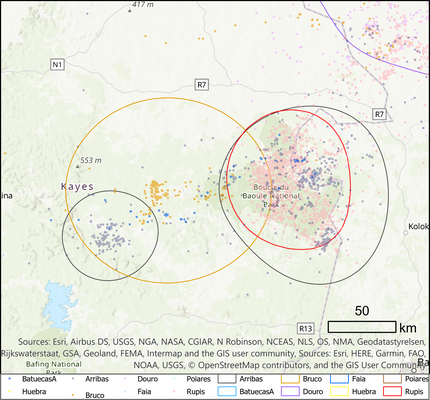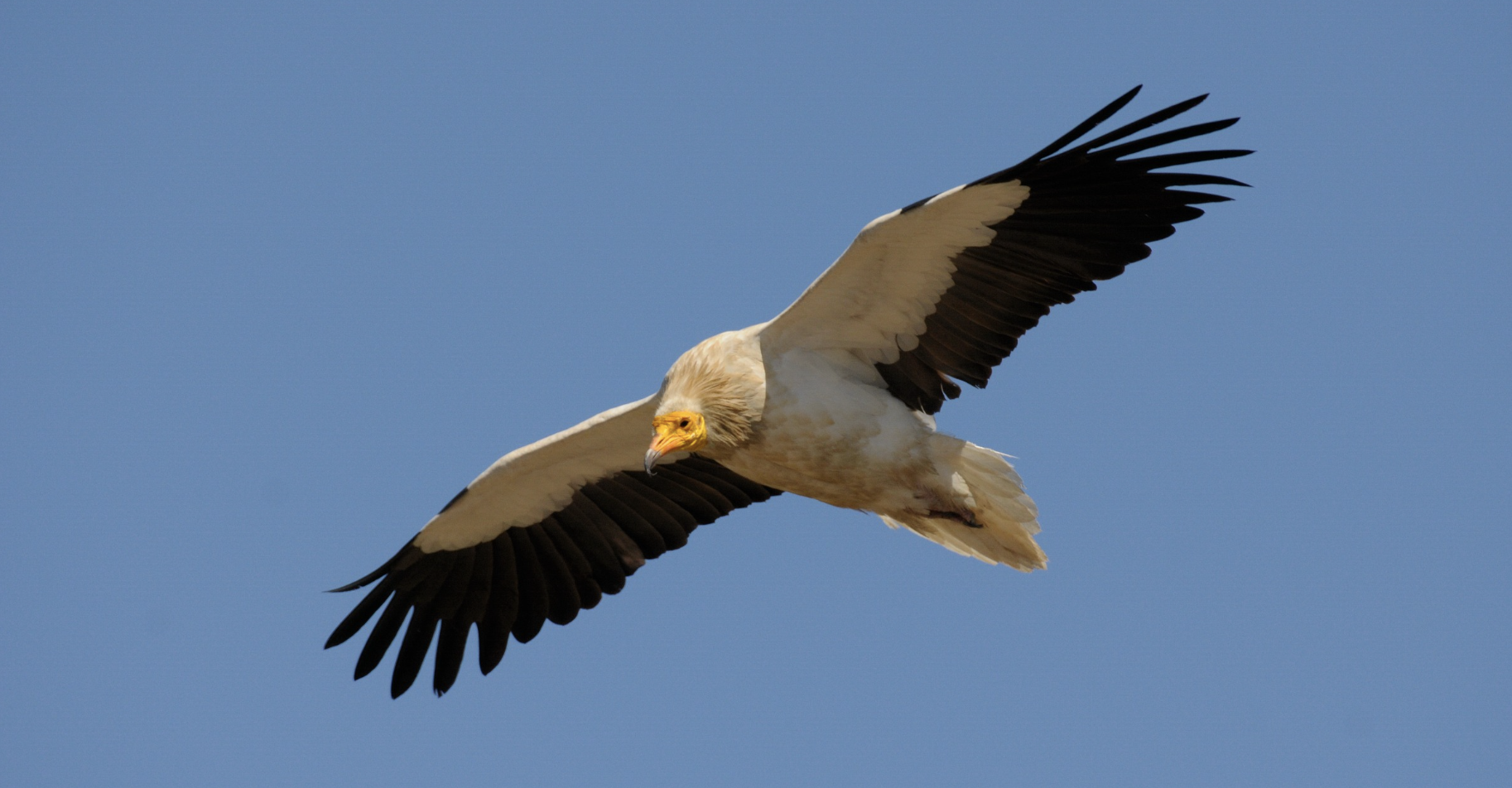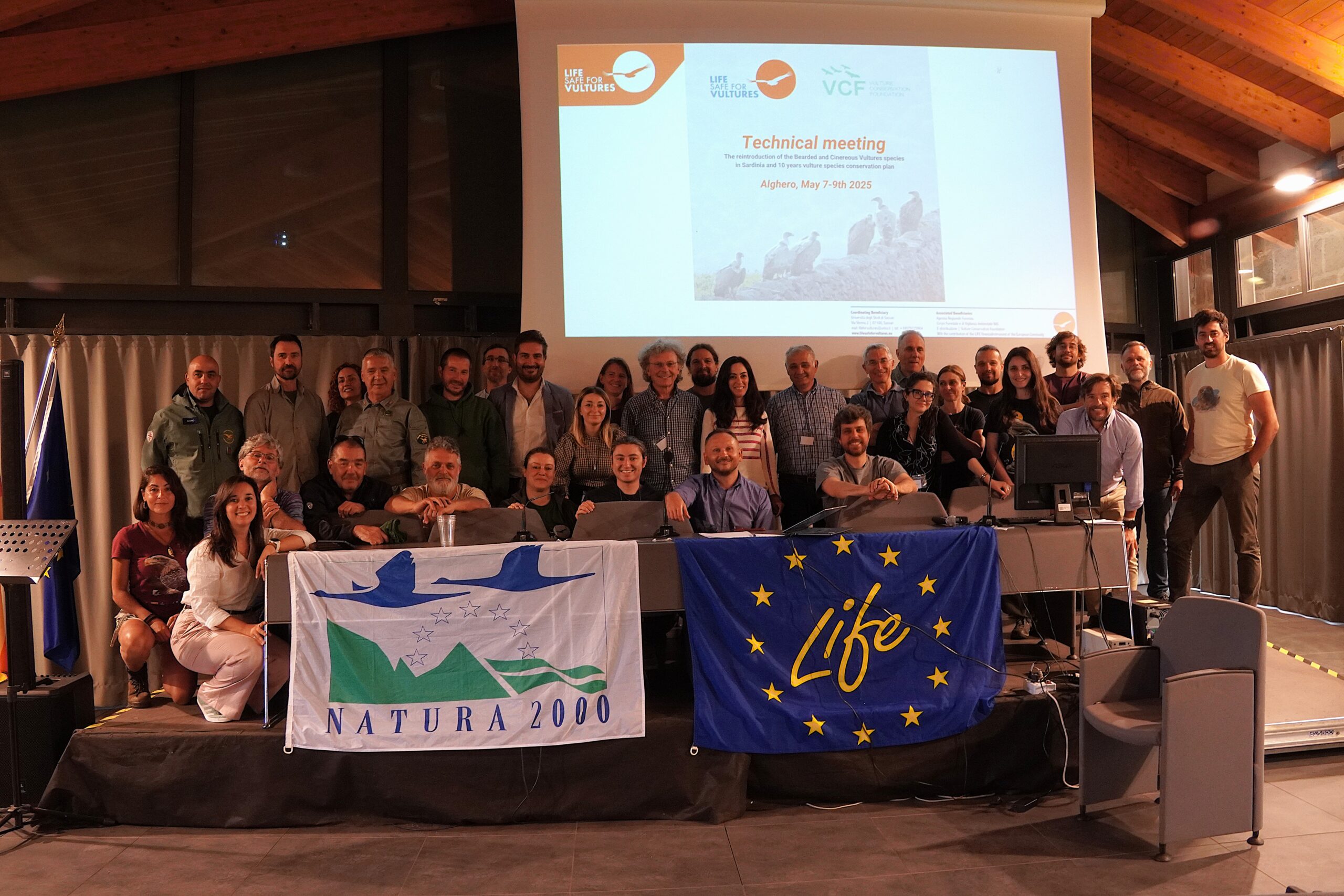
The Egyptian Vulture Buoux did not have an easy start. The vulture that hatched in 2018 spent a lot of its life in rehabilitation, being rescued and released twice. After returning to the wild the second time, it finally crossed the sea and reached Africa in autumn, and is now exploring its wintering grounds for the first time.
First rescue and release
The young Egyptian Vulture Buoux hatched in Baronnies in 2018 and was ringed in the nest by Vautours en Baronnies. One week after leaving its nest, the vulture was found injured. Its parents already left for their autumn migration, and the young bird spent the first days flying around by itself. It was found in September by a team from LPO PACA and brought to the rescue centre ‘Centre régional de sauvegarde de la faune sauvage‘ in Buoux. The young bird had injuries on one wing, possibly due to an eagle attack. The Centre took good care of the young Egyptian Vulture during winter and brought it to Villeperdrix at the end of March to get the bird ready for release. It spent a few days in an aviary, surrounded by the local vultures. All four European vulture species can be found at this site, also thanks to the LIFE GypConnect project, which reintroduces the Bearded Vulture to the region. Before the release, the young bird was also equipped with a GPS tag, provided by the Vulture Conservation Foundation (VCF) with funding by the MAVA Foundation. Tracking and studying the movements of vultures using GPS technology is important to inform targeted conservation actions. And in the case of Buoux, the GPS tag saved its life.
Second rescue and release

Just two months after tagging and releasing the vulture (and a long journey from France to Spain), we realized that something was wrong with Buoux thanks to the GPS data. The last known location of Buoux was around Huesca in Aragon, so we informed our colleagues from the Government of Aragon, about the situation who immediately went to the field and rescued the bird in time. They transferred Buoux to Egines Recovery Centre on 27 June 2019 where they determined that Buoux broke its wing due to a collision with a cable. After spending almost a year in rehabilitation, the Egyptian Vulure made a full recovery and was ready for release! Finally, on 6 May 2020, Buoux returned to the wild.
Buoux reaches African wintering grounds

After Buoux regained its freedom in the spring of 2020, it was exploring Spain for the whole summer before starting to head south for its first migration to Africa. At its 3 CY, after spending the majority of its first years in captivity, being rescued and rehabilitated twice, Buoux managed to successfully cross the Strait of Gibraltar on 19 September, one of the most difficult parts of the species’ long migration journey. It reached Morocco and continued heading south. Buoux is currently experiencing the warm temperatures north of Bamako, near the Boucle du Baoulé National Park in Mali. Interestingly, Buoux uses similar areas like the Egyptian Vultures from the Douro (Portugal and Spain) tagged within the LIFE Rupis project.
Identifying important wintering areas
The VCF tracks the movements of Egyptian Vultures tagged in the Douro Canyon that borders Portugal and Spain, and it seems that Buoux uses similar areas, particularly the Boucle du Baoulé National Park in Mali. GPS tracking is an important conservation tool as it allows us to track the movements of birds, map out the species’ winter range and identify threats they face all year round. The migration study, co-lead by the VCF, combined tracking datasets from multiple stakeholders and of nearly 100 Egyptian Vulture, and derived important information for the species’ behaviour and movements, which proved invaluable for conservation purposes.
The VCF will continue to monitor the movements of Buoux. We hope that Buoux will not need any assistance from us again and that it will have a long life in the wild. You can track the movements of Buoux by visiting our online public maps.










